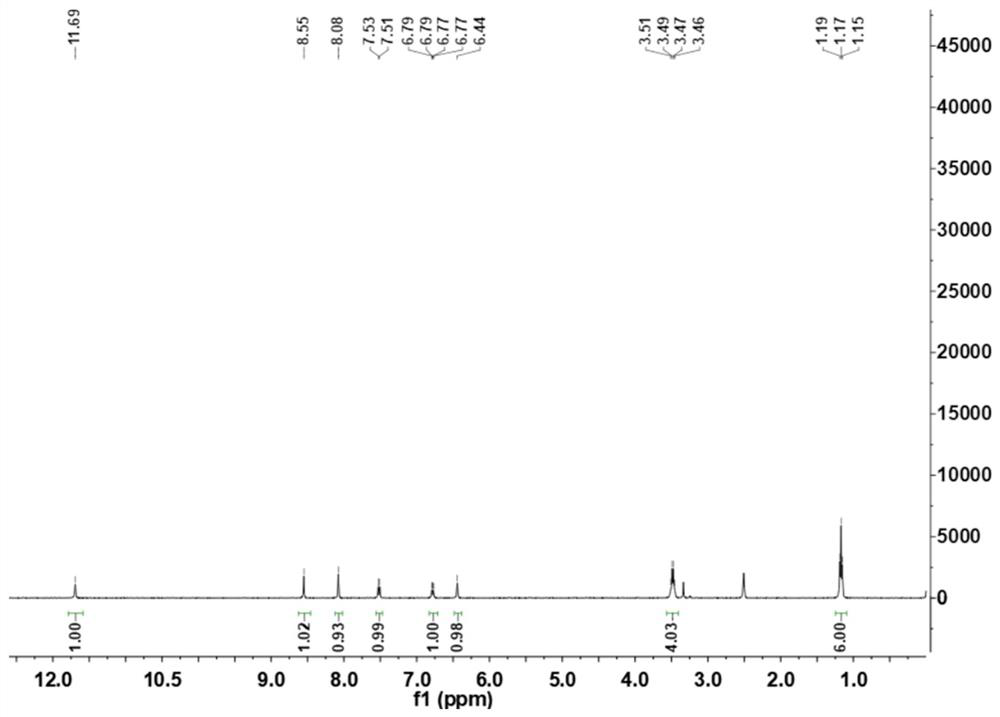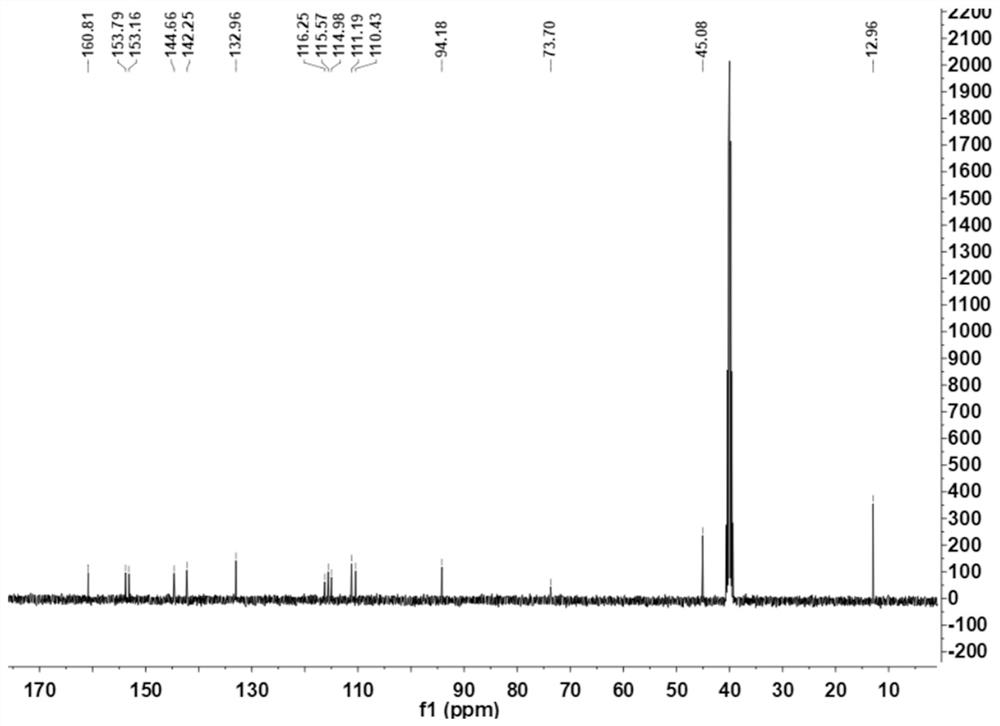Aggregation-induced emission pyranoquinoline red-light-emitting material and application thereof
A pyranoquinoline-based, aggregation-induced luminescence technology, applied in the field of fluorescent materials, can solve problems such as low yield, and achieve the effects of simple synthesis operation, large stokes shift value, and large molar absorption coefficient
- Summary
- Abstract
- Description
- Claims
- Application Information
AI Technical Summary
Problems solved by technology
Method used
Image
Examples
Embodiment 1
[0030] 8-(Diethylamino)-2-imino-2H-pyrano[2,3-b]quinoline-3-carbonitrile (QPIC)
[0031] Add 3-(1H-benzo[d]imidazol-2-yl)-N,N-diethyl-2-imino-2H-pyrano[2,3-b]quinone sequentially into a 50mL one-necked bottle Lin-8-amine 1.00 g (2.6 mmol), malononitrile 0.25 g (3.9 mmol) and ethylene glycol monomethyl ether 20 mL. Reflux reaction for 3h (TLC detection). The reaction solution was cooled to room temperature, filtered under reduced pressure, recrystallized with methanol, and dried to obtain 0.80 g of a dark red solid with a yield of 70%. 1 H NMR (400MHz, DMSO-d 6 )δ:11.69(s,1H),8.55(s,1H),8.08(s,1H),7.52(d,J=8.8Hz,1H),6.78(dd,J=9.2,2.0Hz,1H), 6.44(s,1H),3.48(q,J=6.8Hz,4H),1.17(t,J=6.8Hz,6H). 13 C NMR (100MHz, DMSO-d 6 )δ: 160.81, 153.79, 153.16, 144.66, 142.25, 132.96, 116.25, 115.57, 114.98, 111.19, 110.43, 94.18, 73.70, 45.08, 12.96.
[0032] Adopt the step of above-mentioned embodiment 1, carry out adjustment optimization, specifically as follows:
[0033]
Embodiment 2
[0034] The preparation of embodiment 2 test solution
[0035] (1) Preparation procedure of stock solution:
[0036] Weigh the QPIC prepared in Example 1 and add it into a 10mL colorimetric tube, and prepare the concentration to be 1.0×10 - 3 mol / L chloroform solution, and then dilute QPIC by 10, 100, 1000, 10000 times respectively to prepare a concentration of 1.0×10 - 4 mol / L, 1.0×10 -5 mol / L, 1.0×10 -6 mol / L, 1.0×10 -7 mol / L chloroform solution. Take 10 μL concentration as 1.0×10 -3 Add the mol / L QPIC solution into twelve 10mL colorimetric tubes, dilute to 10mL with different solvents, and make a concentration of 1.0×10 -6 mol / L solution, and measure the fluorescence quantum yield of QPIC, with rhodamine B as the standard reference.
[0037] (2) QPIC concentration-dependent test:
[0038] Take 2mL of QPIC chloroform solutions with different concentrations to test the ultraviolet absorption spectrum and fluorescence emission spectrum. In the ultraviolet-visible spe...
PUM
 Login to View More
Login to View More Abstract
Description
Claims
Application Information
 Login to View More
Login to View More - R&D Engineer
- R&D Manager
- IP Professional
- Industry Leading Data Capabilities
- Powerful AI technology
- Patent DNA Extraction
Browse by: Latest US Patents, China's latest patents, Technical Efficacy Thesaurus, Application Domain, Technology Topic, Popular Technical Reports.
© 2024 PatSnap. All rights reserved.Legal|Privacy policy|Modern Slavery Act Transparency Statement|Sitemap|About US| Contact US: help@patsnap.com










